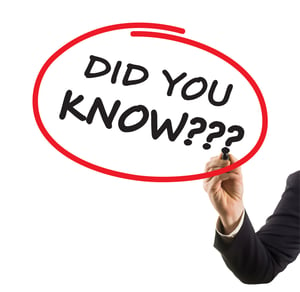 Most people don’t know much about the exotic leathers used by the fashion & design industry to create provocative and unique pieces for elite clientele the world over. They might be familiar with crocodile or python skins, since those exotic leathers get a lot of attention from the handbag and footwear industries for their distinctive appearances, but there’s a lot about exotic leather that they just don’t know.
Most people don’t know much about the exotic leathers used by the fashion & design industry to create provocative and unique pieces for elite clientele the world over. They might be familiar with crocodile or python skins, since those exotic leathers get a lot of attention from the handbag and footwear industries for their distinctive appearances, but there’s a lot about exotic leather that they just don’t know.
To address this frustrating lack of information, we’ve assembled a short list of facts about exotic leather that might surprise, amaze, or impress you:
Fact #1: Alligator Farming Helps Animal Conservation Efforts
Back in the late 1960s, the American Alligator was considered an endangered species. The alligator had been over-hunted for meat and skin, and there were serious doubts that the population could recover. Yet, today the alligator is considered a “least concern” species under the IUCN Red List. Sustainable-use alligator farming has played a huge role in this.
As noted on the Florida Alligator Marketing and Education site, “Alligator farming helps take pressure off the wild alligator population while meeting the high demand for alligator products. Some Florida Alligator farms maintain adult breeding stock that produce all the eggs needed for the farming operation.”
These eggs are protected against the wild predators that would normally prey upon their nests, such as raccoons and the pythons that are now terrorizing the swamp ecosystem.
Surprised that raccoons are cited as a predator of alligators? According to the Florida Wildlife Committee, “About 1/3 of alligator nests are destroyed by predators (mainly raccoons) … only 10 alligator hatchlings will live to one year.”
Because farms protect their eggs from these threats, and take pressure off of the wild alligator population to provide for the exotic leather and growing alligator meat industries, these farms may actually be helping preserve the alligator population.
2: Exotic Leathers Only Make Up About 1% of All Globally-Traded Leathers by Animal Type
According to statistics cited by the UKLeather.org site, the breakdown of globally-traded leathers by animal type is:
- Bovine: 68.8%
- Sheep: 12.9%
- Goat: 11.6%
- Pig: 6.7%
- Other: 1.0%
Exotic leathers, such as stingray, crocodile, or python, all fall under that “other” category, meaning that exotic leathers only account for 1% of all globally-traded leathers.
This disparity between common bovine leather availability and exotic leather availability helps to ensure that every exotic leather product remains highly unique and valuable.
3: Major Fashion Houses Are Spending Millions on Buying Tanneries and Farms to Increase Exclusivity for Their Exotic Leather Products
As the demand for exotic leather goods continues to surge, major fashion houses are working hard to make their products more and more exclusive. One tactic that they’re employing is the wholesale purchase of exotic leather animal farms and tanneries.
In one Bloomberg Business report, it was highlighted that LMVH “bought an Australian crocodile farm for $2.5 million… the following month, Kering bought a French tanning operation, specializing in the sourcing and processing of crocodile skins.”
This can be an issue for independent fashion designers, as these big fashion house-owned suppliers will almost always put the needs of their owners first, and other clients second. This is why it’s important to check with your supplier to see if they’re an independent operation or one that’s owned by a major fashion house.
Have an interesting or important fact to share about exotic leather that we forgot to mention? Please leave a comment below:



